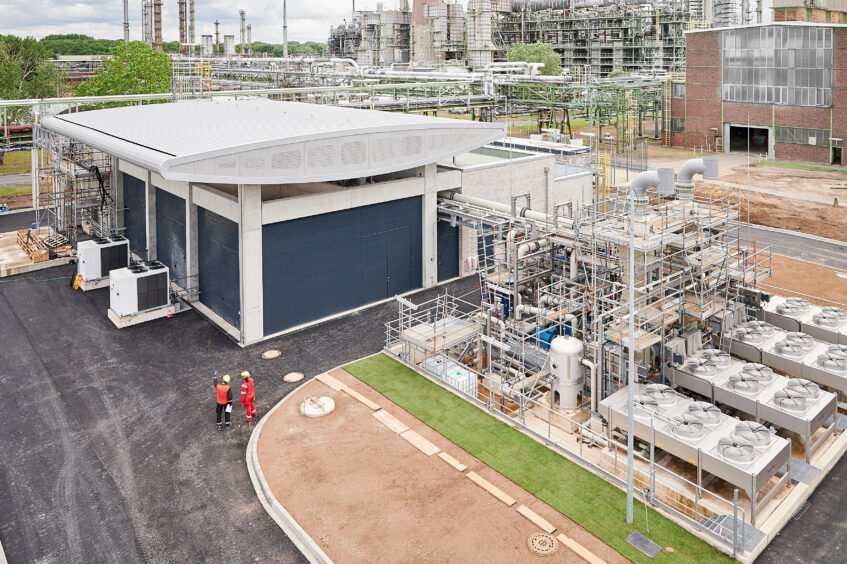
British-Dutch giant Shell has activated Europe’s largest PEM green hydrogen electrolyser at its Energy and Chemicals Park near Cologne, Germany.
The Rheinland electrolyser will use renewable electricity to produce up to 1,300 tonnes of green hydrogen a year, initially used to produce fuels with lower carbon intensity.
Green hydrogen will also be used to help decarbonise other industries.
As part of the Refhyne European consortium and with European Commission funding through the Fuel Cells and Hydrogen Joint Undertaking (FCH JU), the fully operational plant is the first to use this technology at such a large scale in a refinery.
The European consortium backing the project consists of Shell, ITM Power, research organisation SINTEF, consultants Sphera and Element Energy.
The electrolyser was manufactured by ITM power in Sheffield, UK, and includes parts made in Italy, Sweden, Spain and Germany.
Shell downstream director Huibert Vigeveno said: “This project demonstrates a new kind of energy future and a model of lower-carbon energy production that can be replicated worldwide.
“Shell wants to become a leading supplier of green hydrogen for industrial and transport customers in Germany.
“We will be involved in the whole process — from power generation, using offshore wind, to hydrogen production and distribution across sectors.
“We want to be the partner of choice for our customers as we help them decarbonise.”
Graham Cooley, chief executive of ITM Power, said: “We’d like to congratulate our partners on the successful start-up of Europe’s largest green hydrogen production plant.
“We all recognise that this is just the beginning of the journey to net zero.
“The next step, Refhyne II, is even bigger and would take us into the hundreds of megawatts for the first time, on our way to gigawatts deployments.
“The vision and commitment of Shell, North Rhine-Westphalia and the FCH JU show what can be achieved to deliver the world’s commitments on climate change.”
Polymer electrolyte membrane (PEM) electrolysers are more compact than a conventional alkaline electrolyser.
They are suited to working with renewable energy sources because they can operate dynamically using varying loads of electricity.
This allows PEM electrolysers to operate when wind and solar energy generation are cheapest.
Recommended for you
